PROTECT YOUR DNA WITH QUANTUM TECHNOLOGY
Orgo-Life the new way to the future Advertising by AdpathwayNative plants are indispensable in low-maintenance gardens. They have adaptations to the local climate that allow them to thrive with little care. Instead of opting for fussy and needy hydrangeas, why not opt for a tough shrub like the firecracker bush?
This frost-tender specimen sprouts tubular scarlet flowers that contain delicious nectar. The bright red blooms will attract hummingbirds to your garden, creating a spectacle in late summer. You’ll walk into the garden to find hummingbirds fighting over the nectar!
Plant multiple firecracker bushes in a partially shaded border, or situate them in containers near your doorstep. The options are endless. Once you know how to plant, grow, and care for the firecracker bush, you’ll know how to best use it in the yard.
Firecracker Bush Overview

|
Plant Type Evergreen shrub Family Rubiaceae Genus Bouvardia Species ternifolia |
Native Area Arizona, New Mexico, Texas, and Mexico Exposure Partial shade Height 3-4’ Watering Requirements Low |
Pests & Diseases Mealybugs, spider mites, and whiteflies Maintenance Average Soil Type Well-drained Hardiness Zone 8-11 |
What Is It?
The firecracker bush is evergreen with whorled leaves that sprout along its stems. It performs well in warm regions without winter frosts that match the conditions of its native range. It’s one of many Bouvardia species that grow well in U.S. gardens.
Native Area
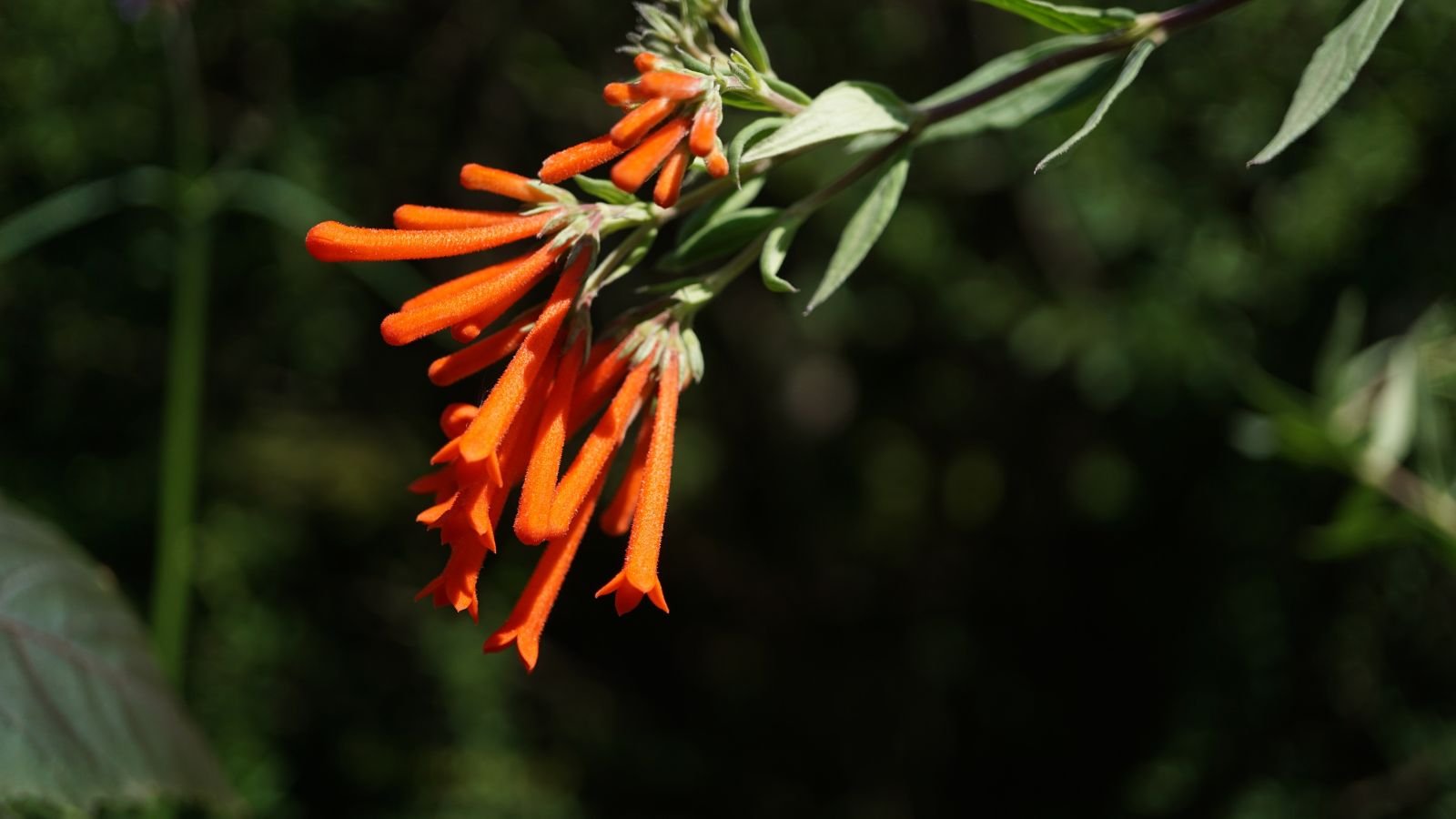 It is native to the Southwestern United States.
It is native to the Southwestern United States.This shrub is native to much of Mexico and parts of Texas, New Mexico, and Arizona. It sprouts in canyons, slopes, woodlands, and other sites with some shade during the hottest hours of the day.
In Mexico, many growers refer to the plant as trompetilla, or “little trumpet” in English. This name references the native plant’s trumpet-like blooms.
Although it’s native to the lower parts of the country, it’ll perform well outside of its range in USDA hardiness zones 8 through 11. In cold zones 7 and below, it’ll grow like an annual or herbaceous perennial. The plant may sprout anew from its roots in spring if the winter isn’t too cold.
Characteristics
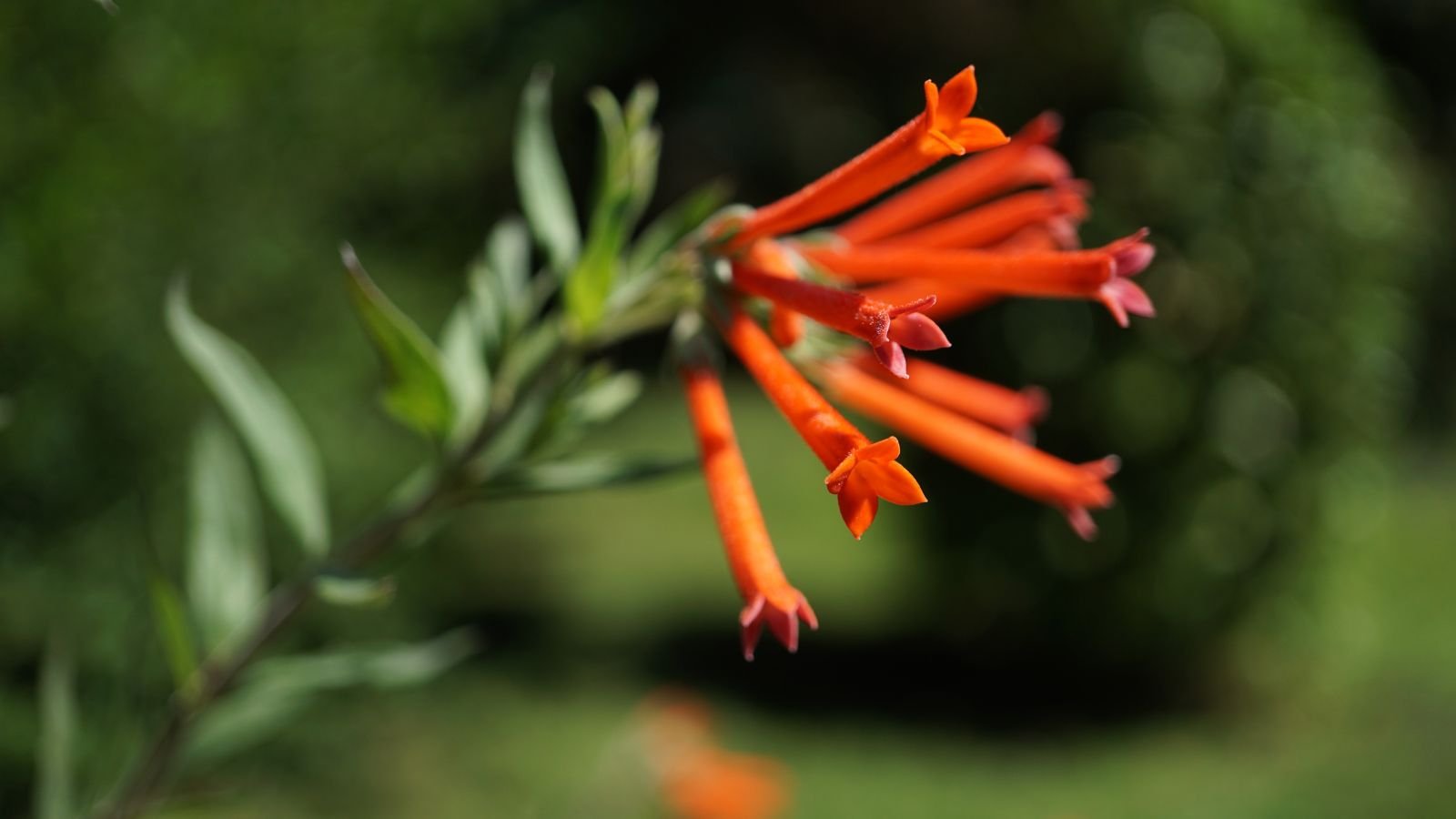 It appreciates protection from cold temperatures in the winter in order to yield its unique tubular blossoms in the summer.
It appreciates protection from cold temperatures in the winter in order to yield its unique tubular blossoms in the summer.This evergreen is a sprawling, rambling bush with floppy stems. Though it can reach over four feet tall, its stem tips tend to flop over once they reach that height. Green and narrowly oval leaves sprout in clustered whorls along them.
In late summer and early fall, red tubular blossoms develop in bunches on the stem tips. They can reach up to an inch and a half long, and they make a striking display in gardens and landscapes. The leaves below the blooms are smaller than those lower on the stems.
Frost-tender, the firecracker bush needs protection from cold temperatures if they occur in your region. Grow it in a container and bring it indoors for the winter, or find potted plants at nurseries each spring to transplant into the garden.
Planting
It’s easier to find this plant in a container than it is to grow it from seed. Though it’s difficult, seed starting is not impossible! Which planting method works best for you depends on where you live and how much space you have.
Growing From Seed
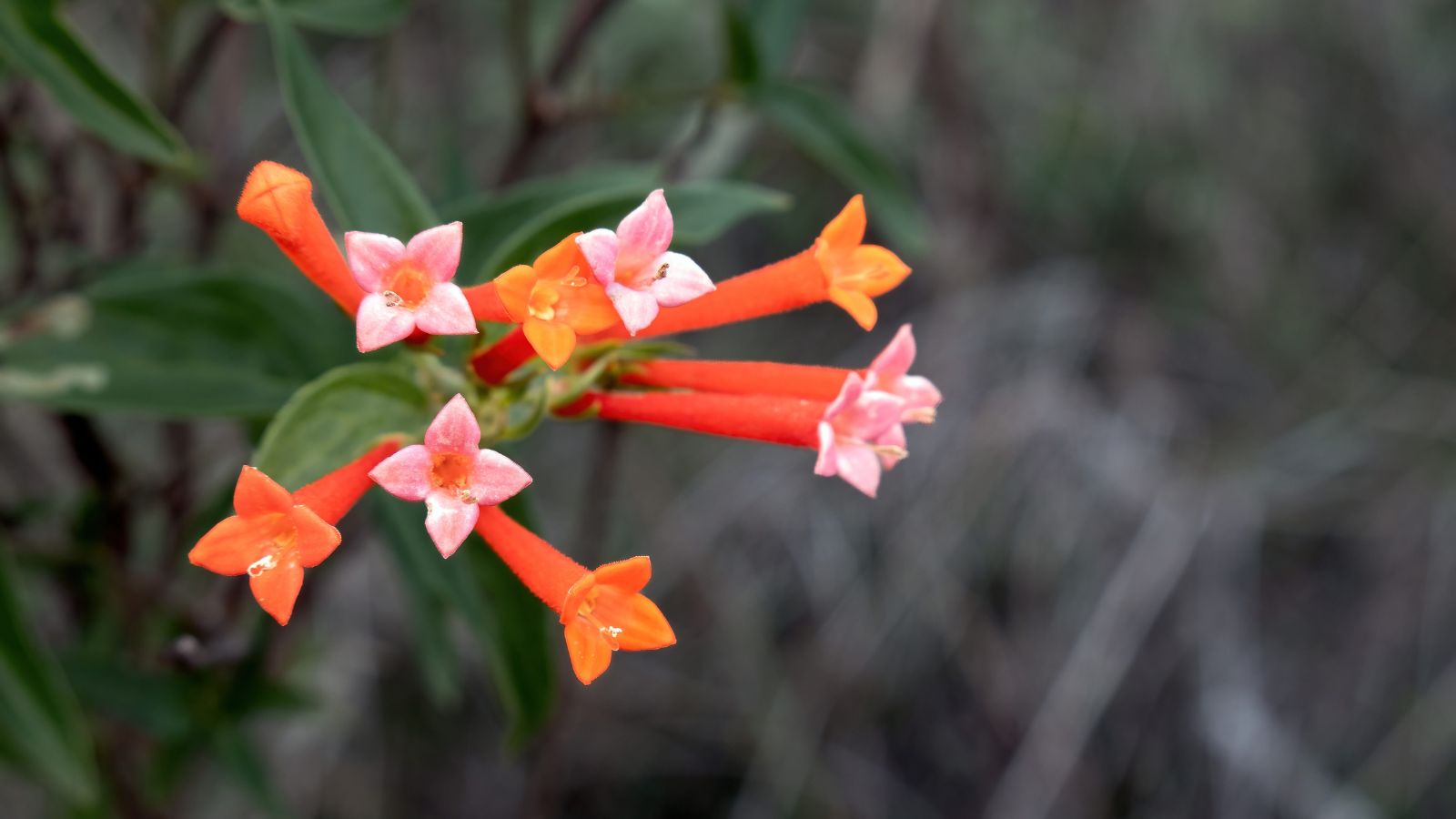 Seeds can take several weeks to germinate.
Seeds can take several weeks to germinate.If you’re up to the challenge, try sourcing seeds to propagate. It’s a straightforward process with the right materials. You’ll need a seed starting mix with good drainage, pots, and a well-lit location.
Start by filling the pots with soil, then plant the seeds on the surface. Pat the seeds down and cover them with a thin layer of soil. Gently water the pots and place them in a warm, well-lit location.
Add grow lights indoors if your room is too dark for seed starting. Partial shade or bright indirect light works well outdoors.
The seeds may take many weeks to germinate. Ensure they stay moist, but not soggy, and don’t let them dry out. After seedlings pop up, give them a few weeks to establish themselves and grow roots before you transplant them.
Transplanting
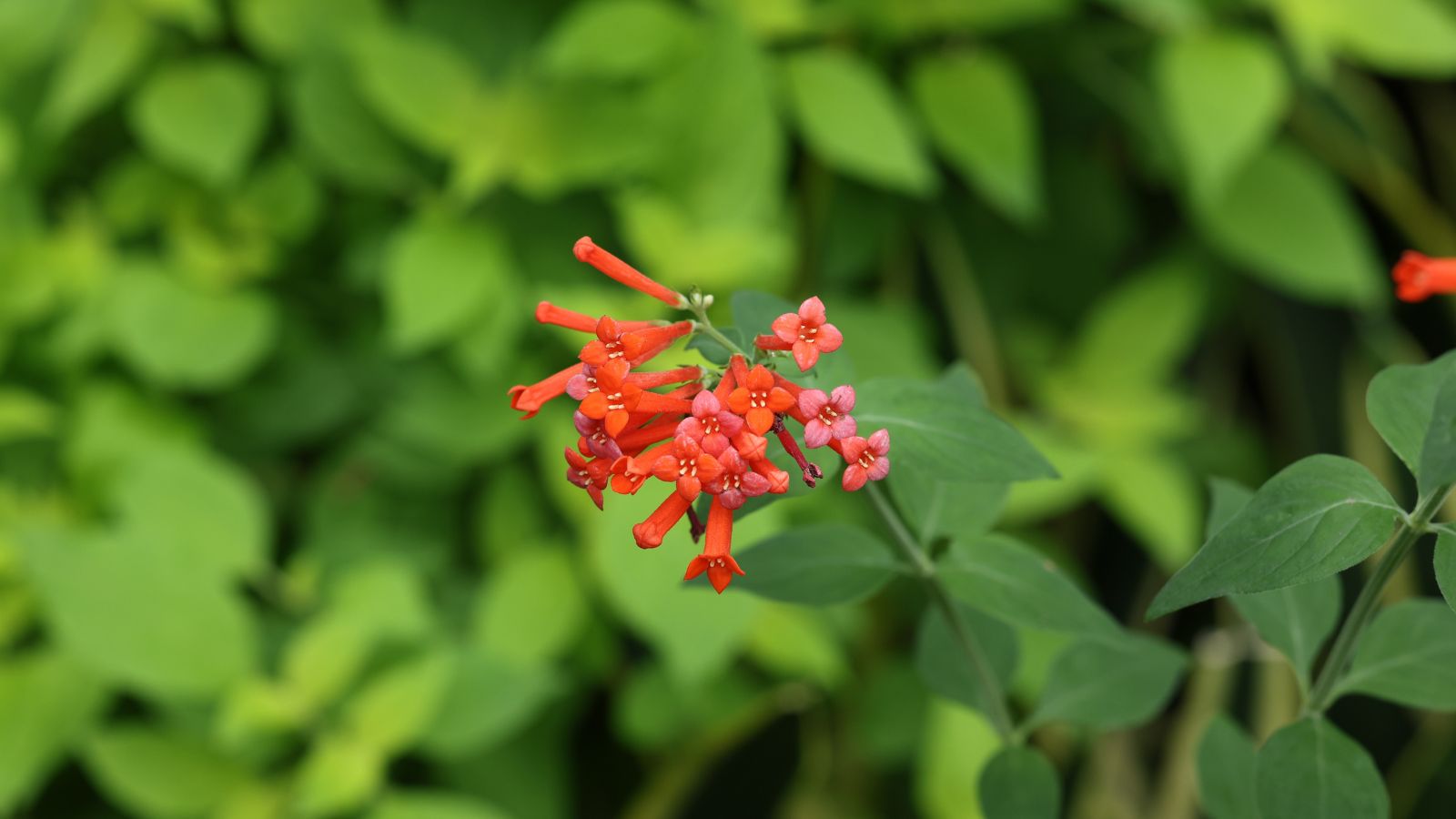 Partial shade is the ideal location to transplant young bushes.
Partial shade is the ideal location to transplant young bushes.Whether you started seeds or found potted specimens at a nursery, transplanting the young plants is a crucial step in the growing process. Proper transplanting sets your firecracker plant up for success. Choose an open site with shade during the middle of the day.
Start the transplanting process by preparing the hole for planting. Dig a hole as deep and twice as wide as the shrub’s rootball, then place it inside. Cover its roots with soil, water them well, then add more soil if the ground sinks after watering.
Adding mulch on top of the ground will help preserve moisture and prevent the roots from drying out. It’ll protect soil microbes, insulate plant roots, and add nutrients to the soil as it decays. A layer of mulch may boost the shrub’s chances of surviving the winter.
How to Grow
Firecracker bushes grow well in a wide variety of conditions. With the right care and maintenance, they’ll thrive for years to come in your home garden. Treat them as perennials in mild climates and summer annuals in cold ones.
Light
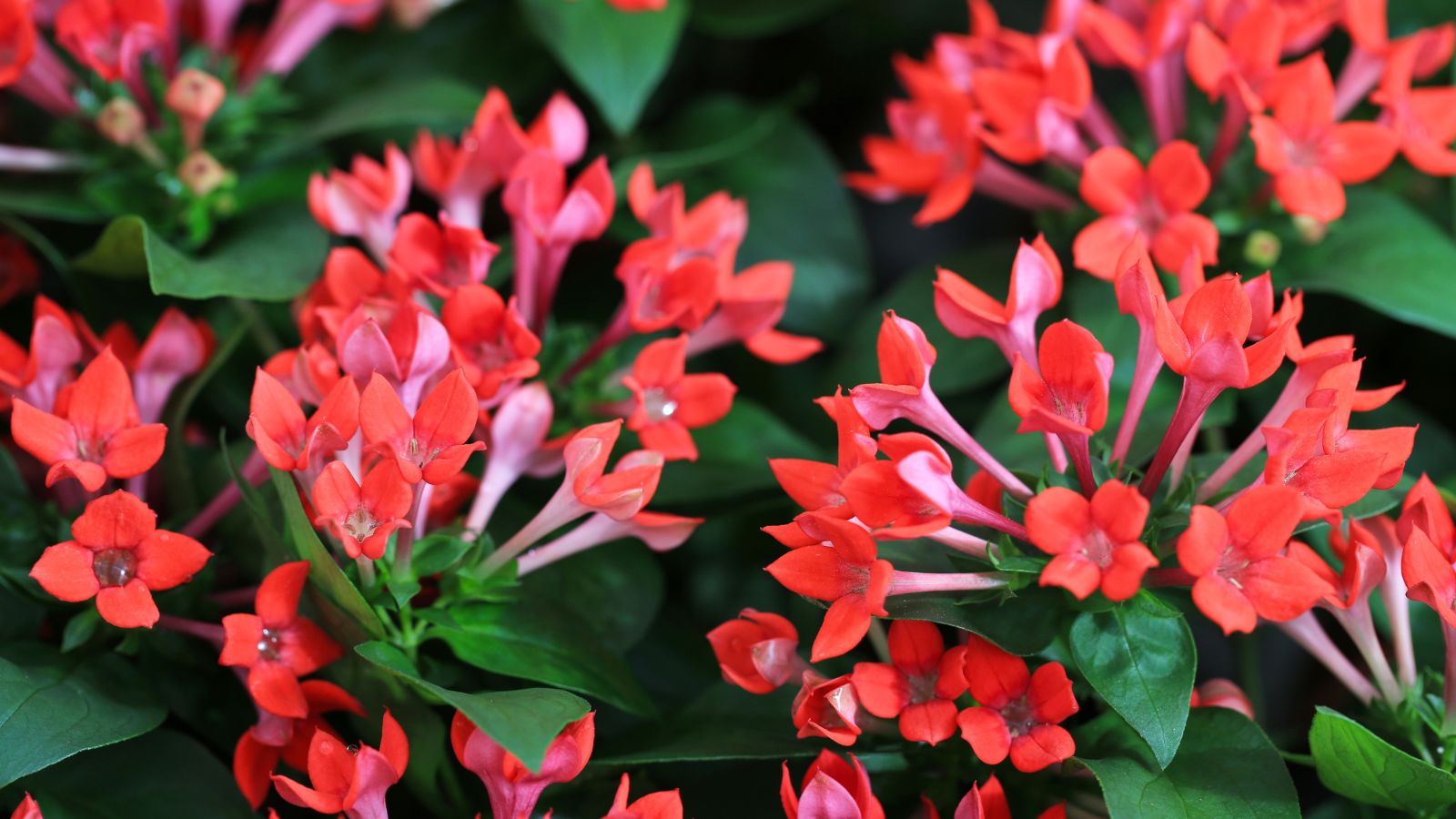 They grow naturally along stream banks where they enjoy afternoon shade.
They grow naturally along stream banks where they enjoy afternoon shade.These fiery shrubs grow best in partial shade, with between three and six hours of daily direct sunlight. They naturally grow in canyons and along stream sides where occasional shade protects them from excessive heat.
In warm, southern climates, grant your plants midday or afternoon shade during the hottest hours of the day. They’ll grow longer with more shade and compact with more sun. The more sun your plants receive, the more water they’ll need during the growing season.
Water
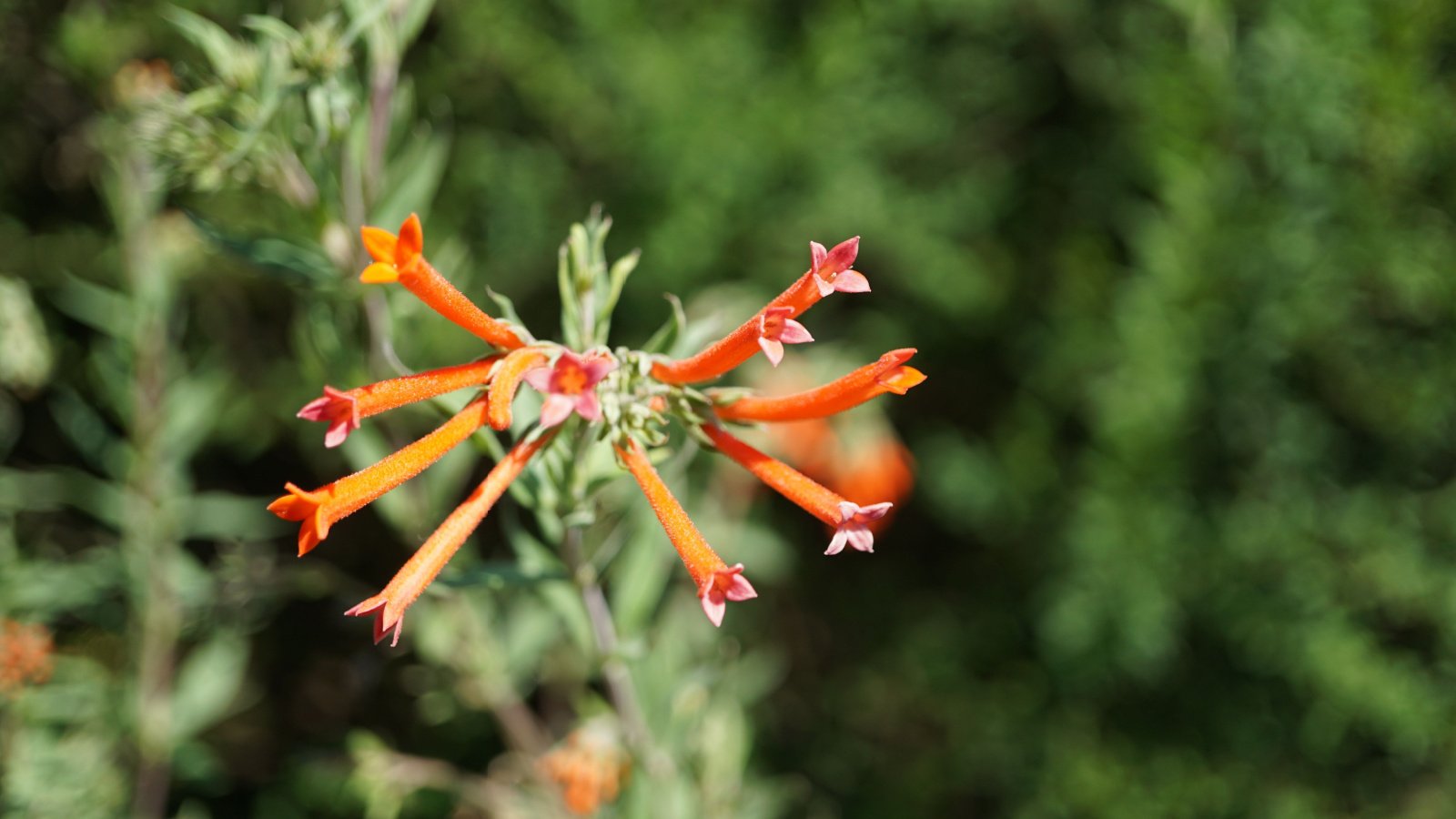 This species is quite drought-tolerant.
This species is quite drought-tolerant.These native shrubs need little water to survive. They’ll tolerate recurring droughts and a lack of natural rainfall. Though they’re drought tolerant, they perform best with occasional watering during the growing season.
Potted plants need more moisture than those growing in the ground. Stick your finger in the soil to see how wet it is under the surface—it’s time to water if it’s bone dry underneath, and it’s best to wait if it’s wet.
Soil
 Ensure plenty of organic matter for drainage.
Ensure plenty of organic matter for drainage.Well-drained soil is the best type for this native shrub. Dense clay will grow too soggy, making sandy soils more suitable. If you suspect the ground isn’t ideal for the plant, amend it with plenty of organic matter to boost it.
Organic matter helps soggy soils grow more free-draining, and it helps sandy ones retain more moisture. Compost, leaf mold, and straw are some of the many organic materials you can use to boost the soil’s quality.
Fertilizing
 Very little to no fertilizer is needed.
Very little to no fertilizer is needed.A low feeder, this native plant requires little to no fertilizer. Too much fertilizer can cause floppy, long stems that sprout more leaves than flowers. Avoid feeding your firecracker bushes that grow in the ground.
Potted plants may benefit from a low dose of fertilizer during the growing season if they haven’t had any in a while. Dilute the fertilizer to half or a quarter of a normal dose and apply it in spring after new growth appears.
Maintenance
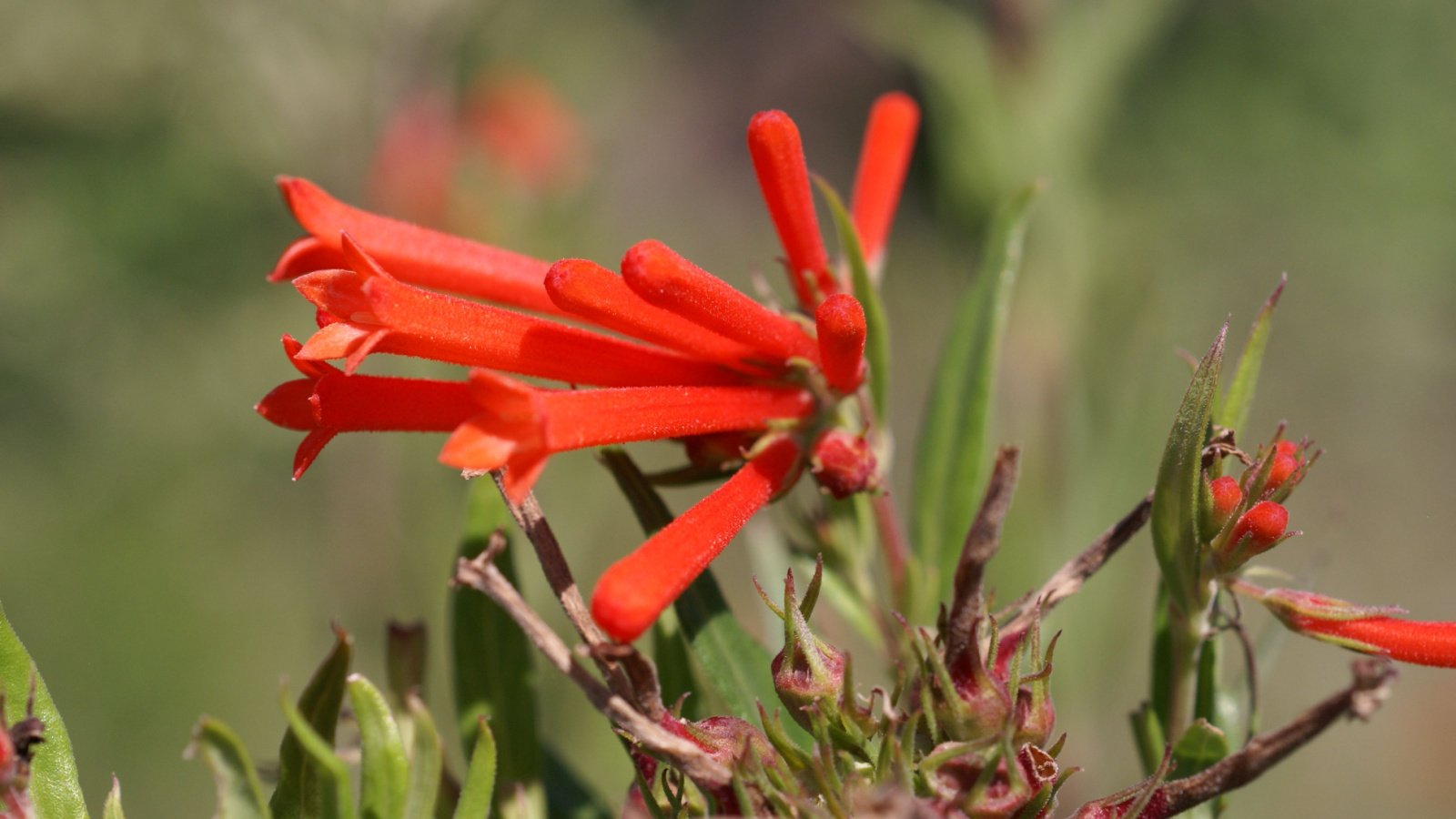 Pinching or pruning off spent flowers can ensure a desirable shape.
Pinching or pruning off spent flowers can ensure a desirable shape.These native shrubs require an average amount of maintenance, depending on how much or how little care you’d like to give. After the flowers fade, you may pinch or prune them off to keep the shrub compact and bushy.
If you don’t mind a floppy specimen, don’t prune! Pruning is optional if you’d like a compact structure. Aside from regular pruning after the flowers fade, the plants require little other maintenance. Remove dead or diseased portions in spring, and protect the tops from frigid winter nights with frost cloth or row cover.
Propagation
Propagate healthy specimens by germinating their seeds or taking cuttings from their stems. Cuttings grow into mature plants more quickly than seeds, though seeds tend to be cheaper than potted plants. Use whichever method works best for you and your garden.
Cuttings
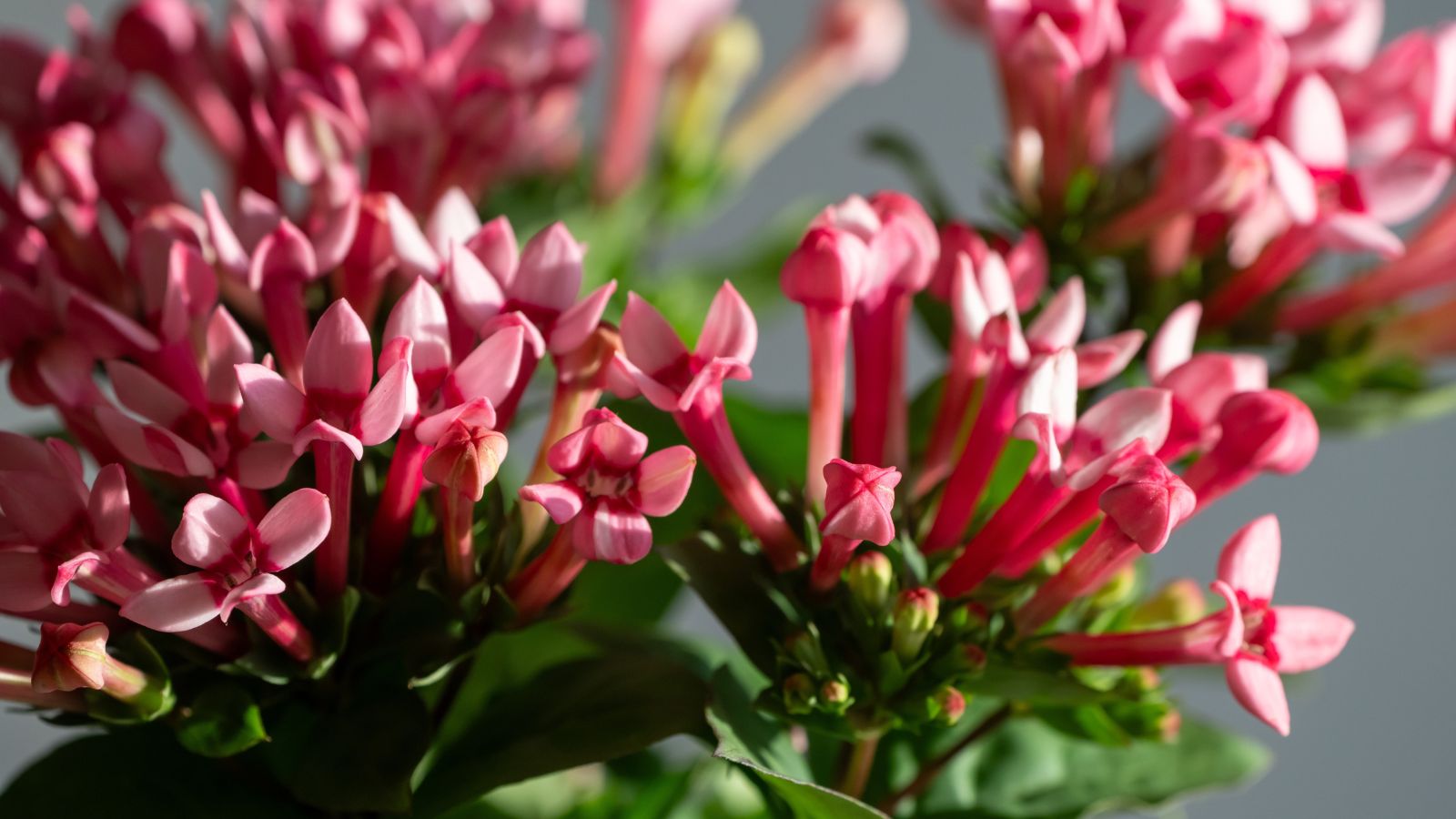 Take cuttings in the spring from healthy branches.
Take cuttings in the spring from healthy branches.Cuttings replicate existing plants. You’ll take portions of the stems, cut them off, and place them in pots with soil. The cut stems will sprout roots, after which you can remove them from their containers and transplant them into a larger container or straight into the yard.
Start the process by cutting four to six-inch stem portions in spring. Choose healthy branches with ample fresh growth. Remove the cuttings’ lower leaves, then place them in pots with moist potting soil. Keep them in partial shade or bright indirect light while they form roots.
To boost their chances of rooting, add a humidity dome on top of the plants to increase humidity levels. Cut plants lack roots to drink water, and they’ll need a humid environment to stay perky. You can remove the dome after the roots form.
The rooted cuttings will need a few weeks to sprout healthy root systems. Wait to transplant them until you see roots poking out of the bottom of the pots.
Seed Saving
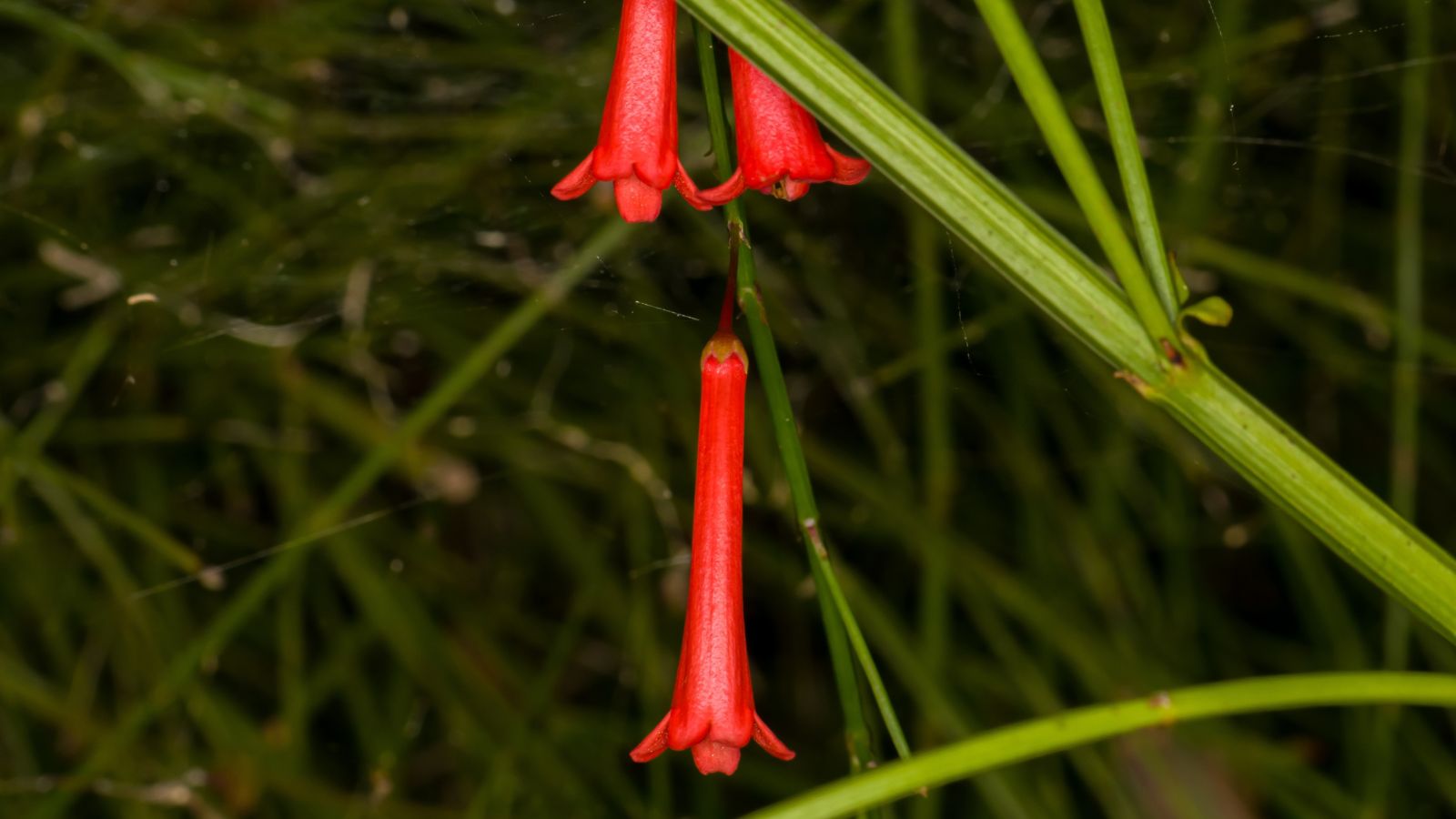 Remove the pod-like capsules and keep them in a brown paper bag until they dry.
Remove the pod-like capsules and keep them in a brown paper bag until they dry.If your neighbor has a bush or you see one growing near you, you can collect its capsules at the end of the growing season to harvest its seeds. They’ll ripen from late summer through early winter. Pinch or prune the pod-like capsules off, then place them in a brown paper bag.
As the capsules dry, they’ll pop open and dump the seeds into the bag. Once all the pods open, dump the seeds out and place them in a container. Use a glass or plastic container, or use a paper envelope. Store the containers in a cool, dark location until you’re ready to plant the seeds.
Popular Varieties
Two cultivars are readily available in most of the U.S. Though these varieties are less rewarding for hummingbirds and pollinators, their unique growing habits allow them to thrive in home gardens. Look for them online or at your local nursery.
‘Estrellita® Scarlet Bouvardia’
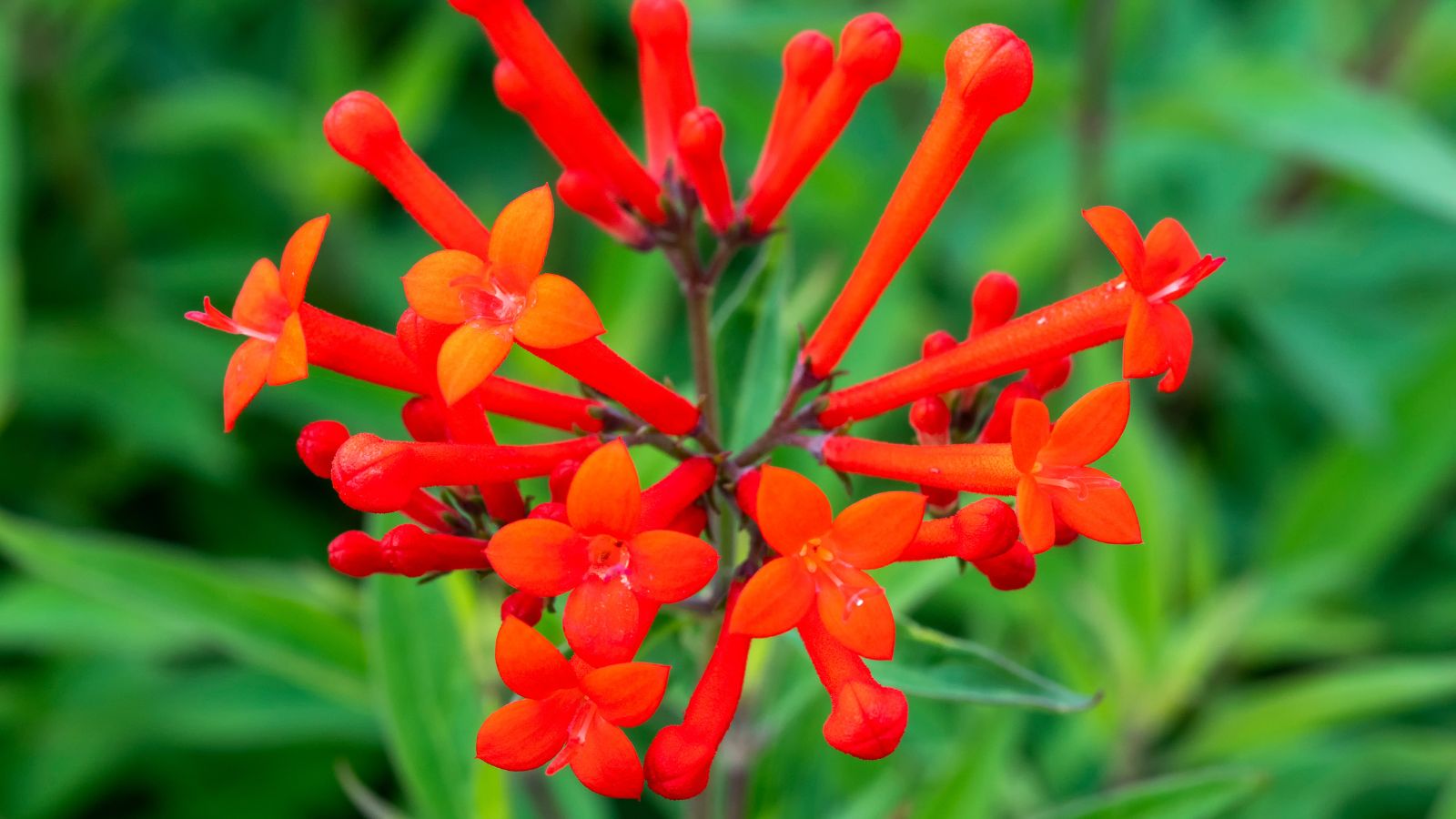 This cultivar has a long flowering period.
This cultivar has a long flowering period.The Estrellita® series is a superb and readily expanding collection of firecracker bushes. The scarlet Estrellita® cultivar claims to flower longer than the species, offering blooms the entire summer. It requires no deadheading to look spectacular all year.
This hybrid is perfect for growing in containers. If you live in a cold climate, you can move the plants inside for the winter to keep them safe until next spring.
‘Estrellita Little Star®‘
 Pink, orange, and red flowers offer a unique firecracker flair.
Pink, orange, and red flowers offer a unique firecracker flair.Little Star® stays more compact than Bouvardia ternifolia. It’ll sprout short, bushy stems with blooms clustered on their tips. Different from the scarlet blooms of the species, Little Star® grows orange, pink, and red flowers of varying hues.
The perfect container specimen, this hybrid works well in tight spaces and small pots. It requires no deadheading or maintenance aside from removing dead or diseased branches.
Common Problems
Relatively problem-free, these native shrubs won’t create a hassle in your yard. They rarely attract pests, and few diseases affect them. Prevent most issues by keeping your plants happy and healthy with occasional watering and partial shade.
Pests
 A strong stream of water is usually enough to dislodge them.
A strong stream of water is usually enough to dislodge them.Though rare, spider mites, whiteflies, and mealybugs may infest an unhappy plant. They’ll stay on dry leaves and spread throughout the shrub if left untreated. Remove them with a strong stream of water. Spray the leaves daily until the pesky pests completely disappear.
Wetting the leaves harms these pests in two ways. It pushes them off the plant, and it makes the leaves too moist for the pests to thrive.
Diseases
 Avoid soggy soils to prevent root rot.
Avoid soggy soils to prevent root rot.The main disease you’ll see is root rot. Plants sitting in soggy soils or standing water will succumb to rot in a short amount of time. To prevent root rots, grow your specimens in free-draining soil and water them sparingly during the growing season.
Frequently Asked Questions
It may reach upwards of four feet tall, though the stems will flop over when they grow too tall. They’ll often stay between three and four feet.
You don’t need to prune this shrub! Remove the spent flowers to keep it compact and bushy.
Look for this shrub online, at native plant nurseries, and garden centers in the South. It’s commonly available within its native range.


 1 week ago
12
1 week ago
12





















 English (US) ·
English (US) ·  French (CA) ·
French (CA) ·